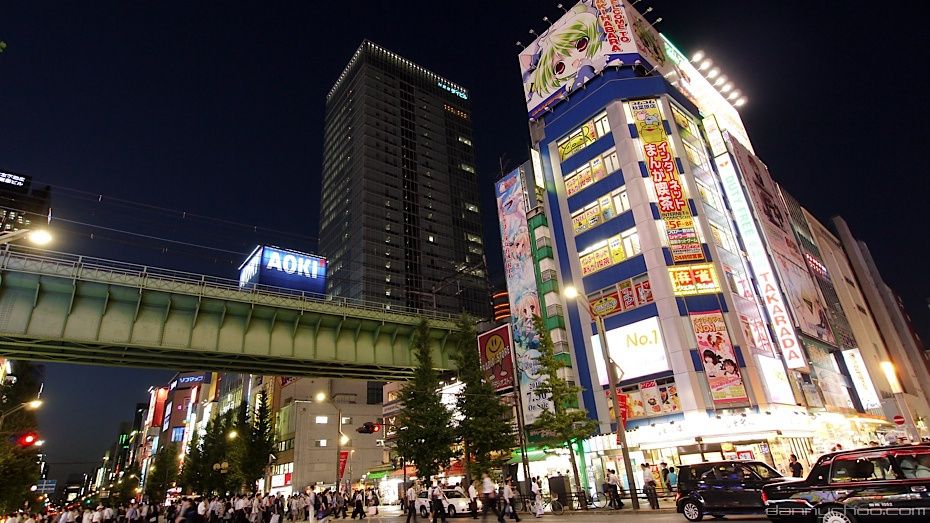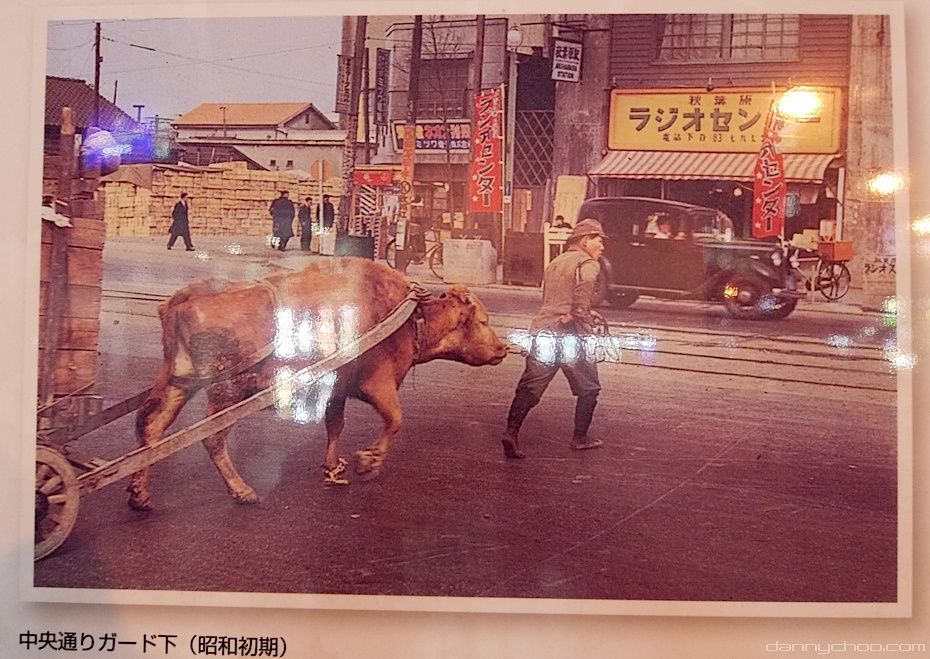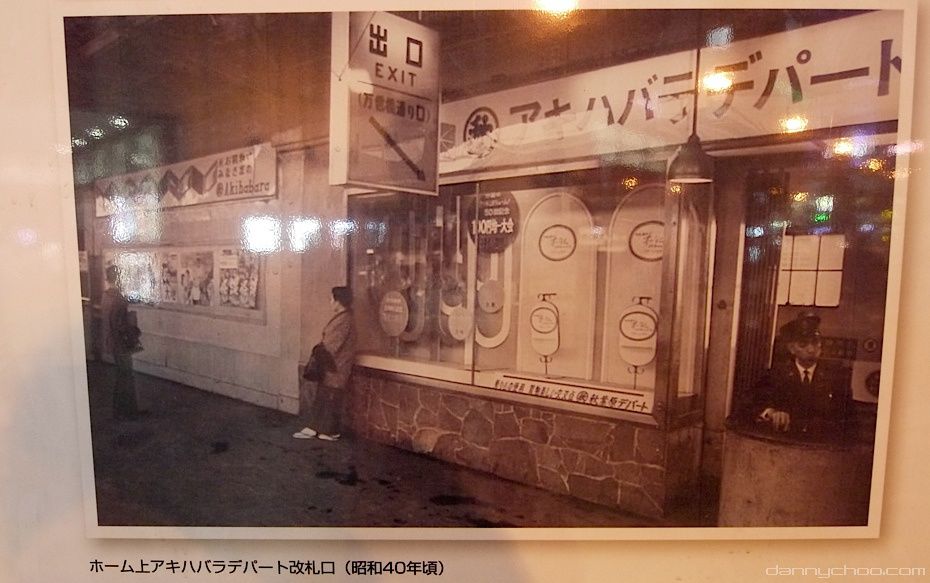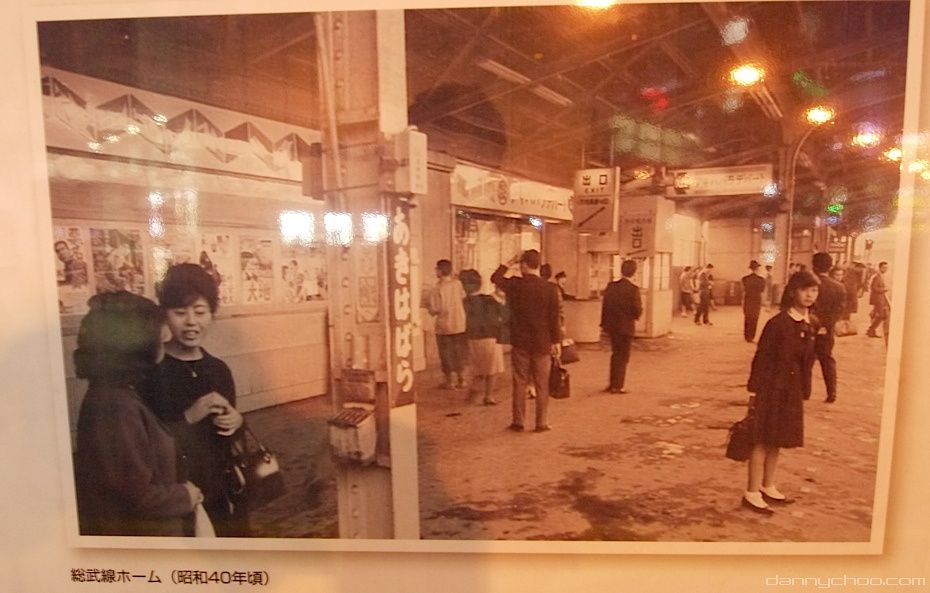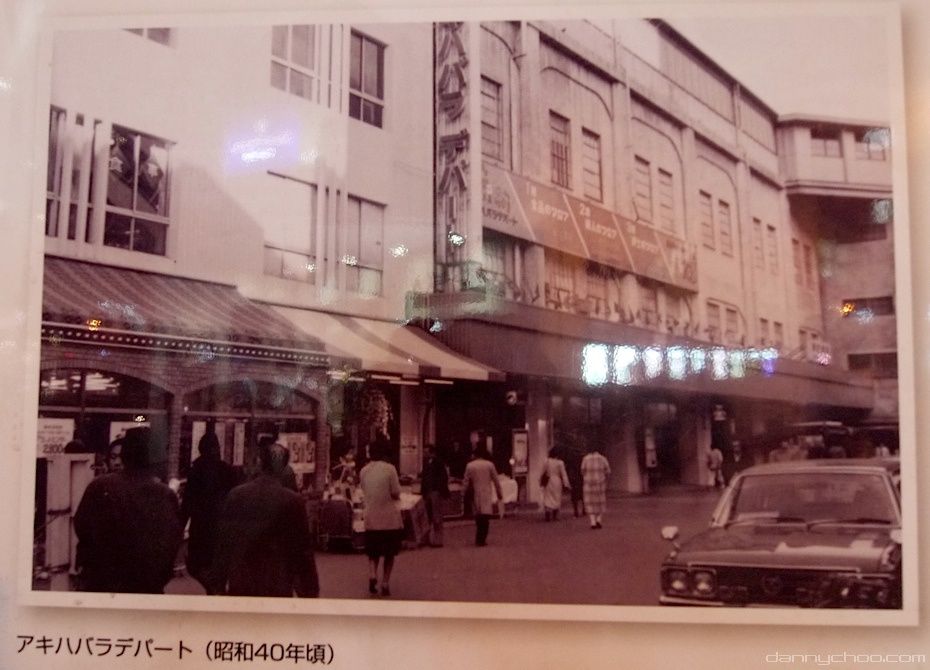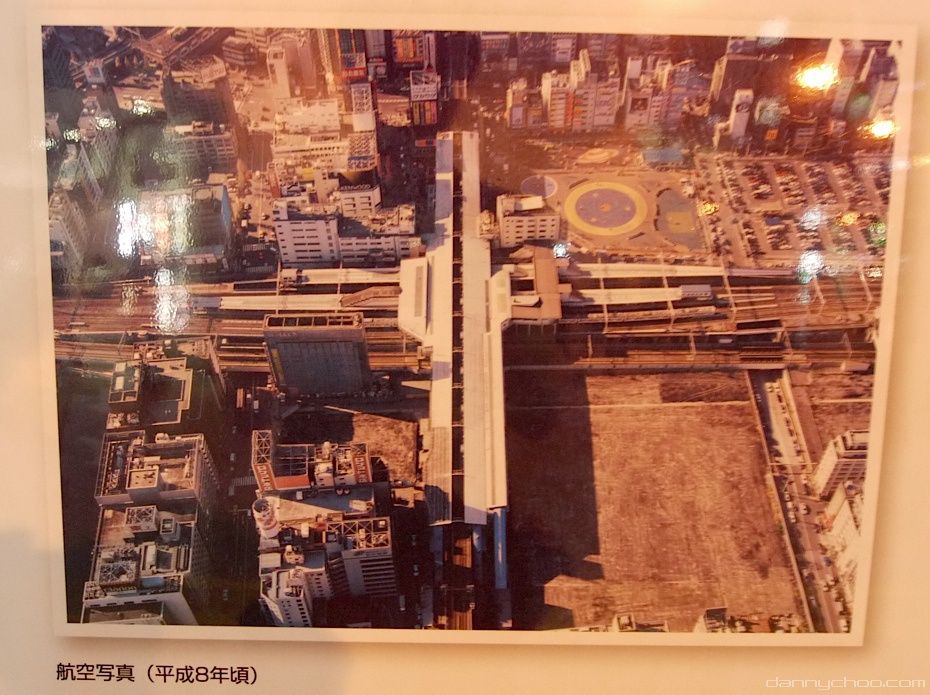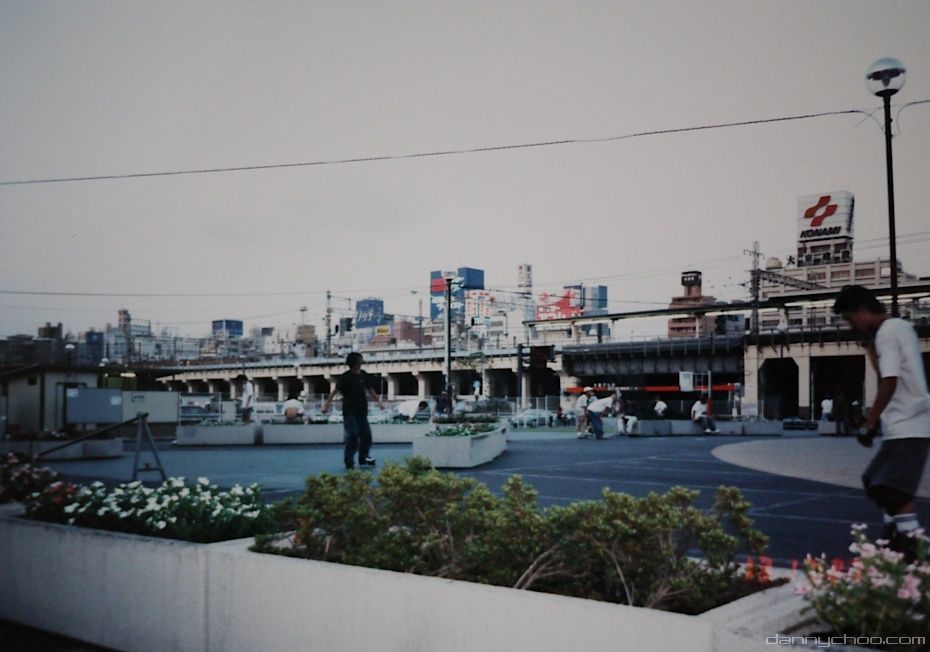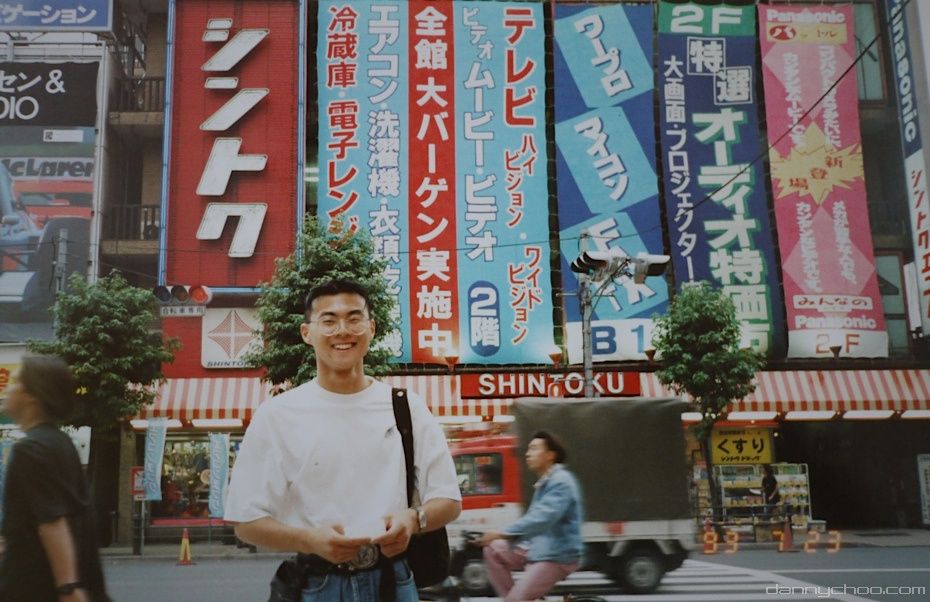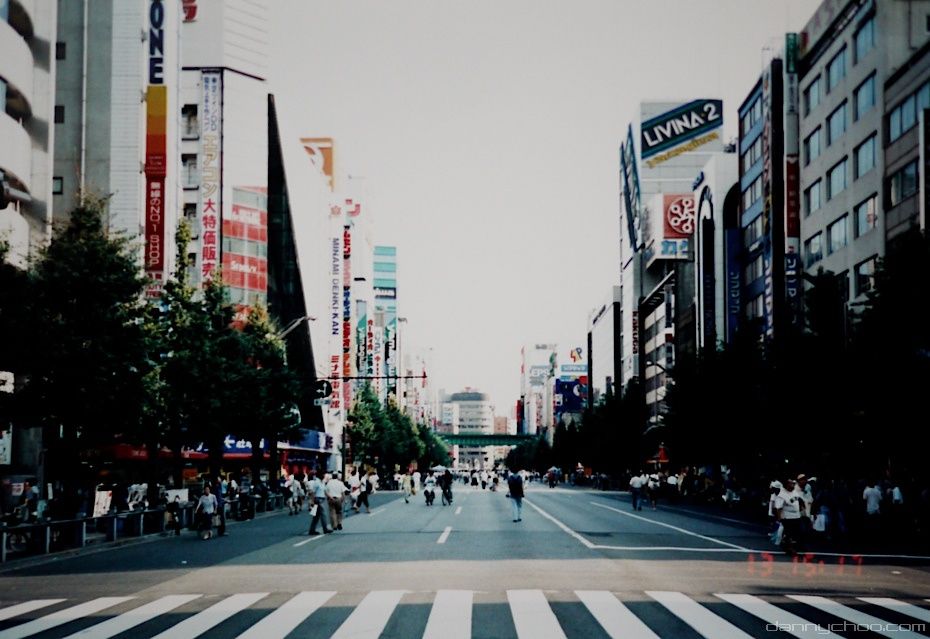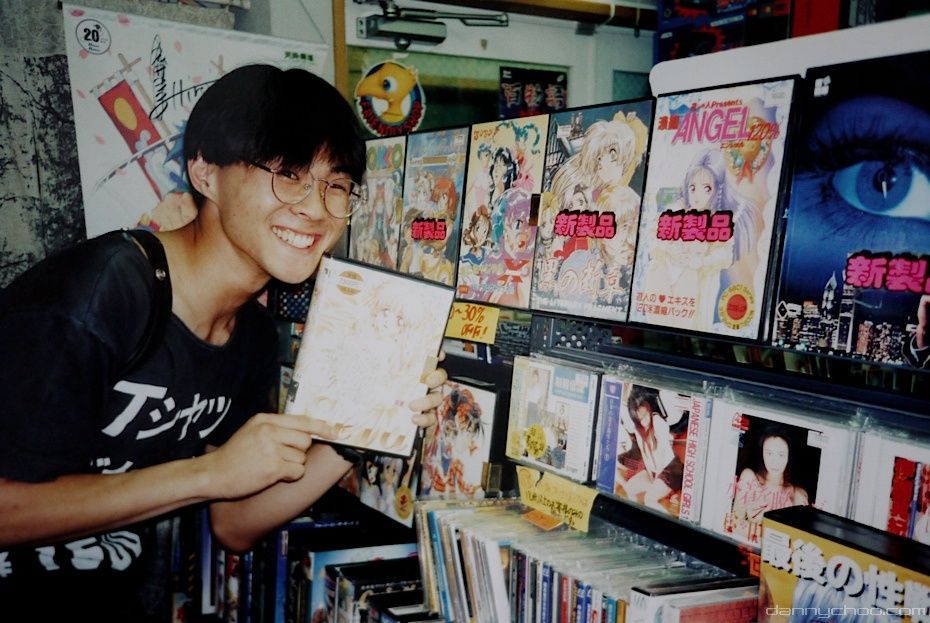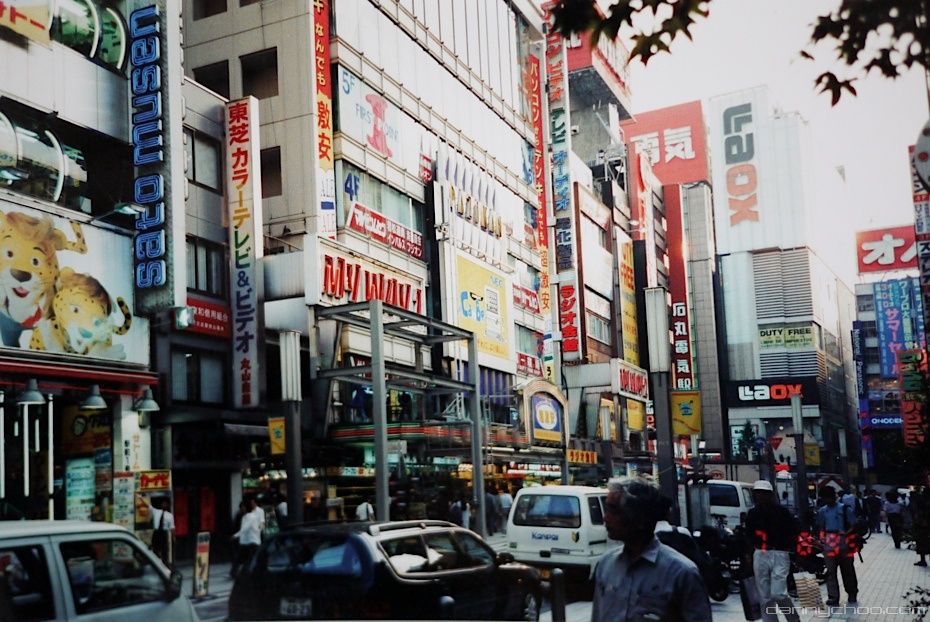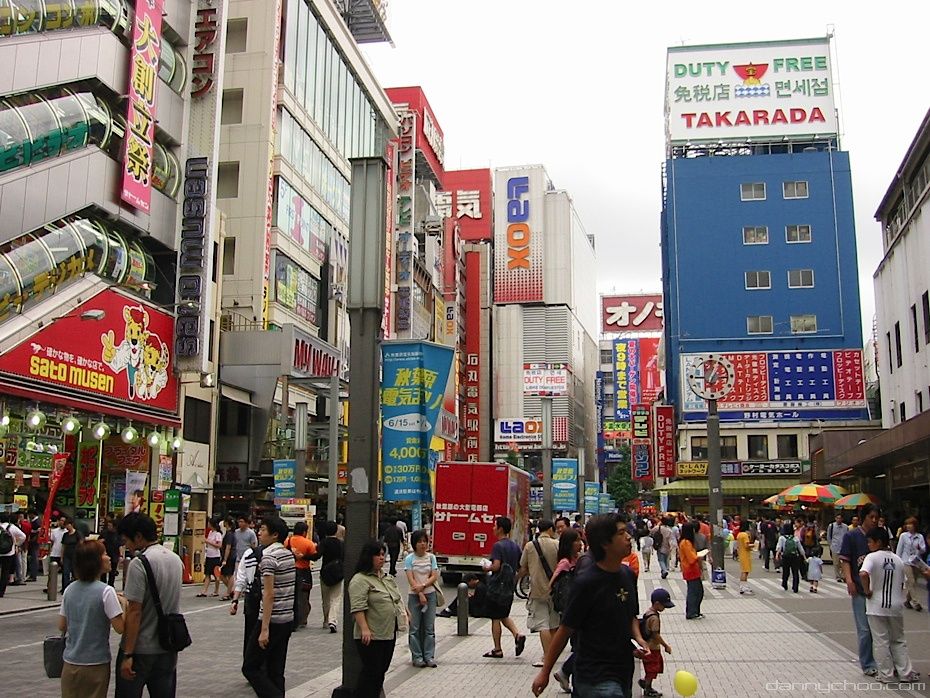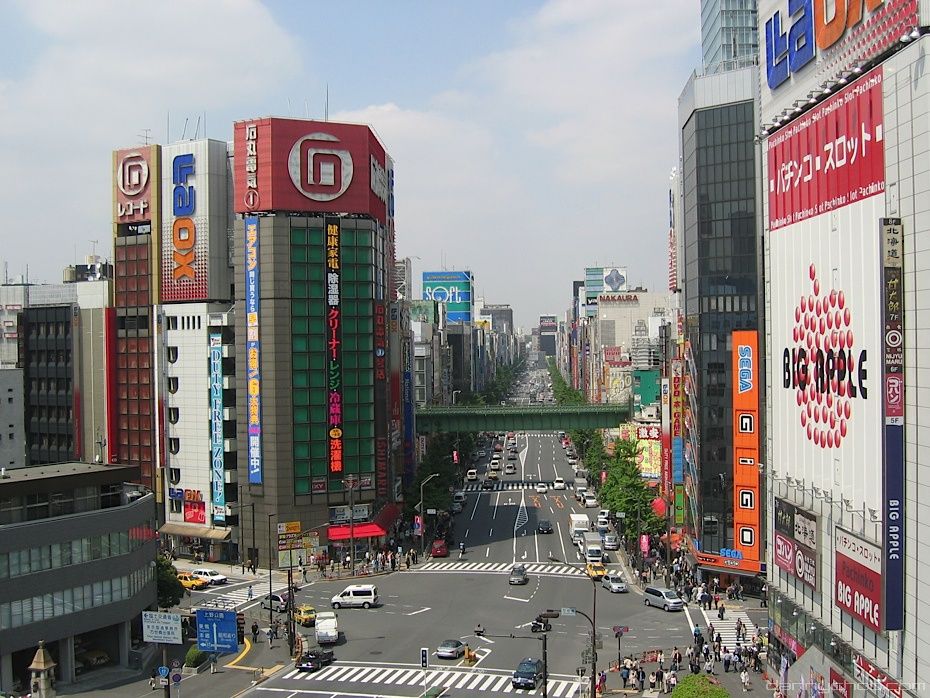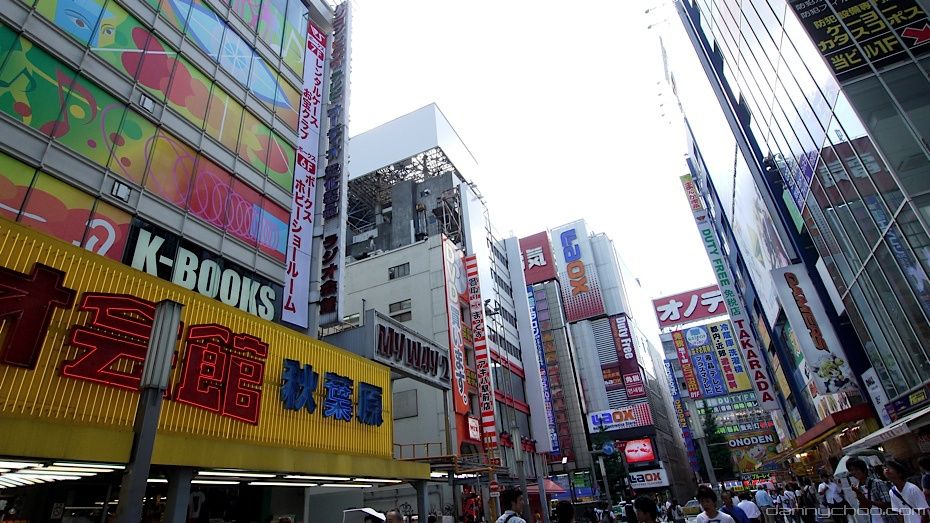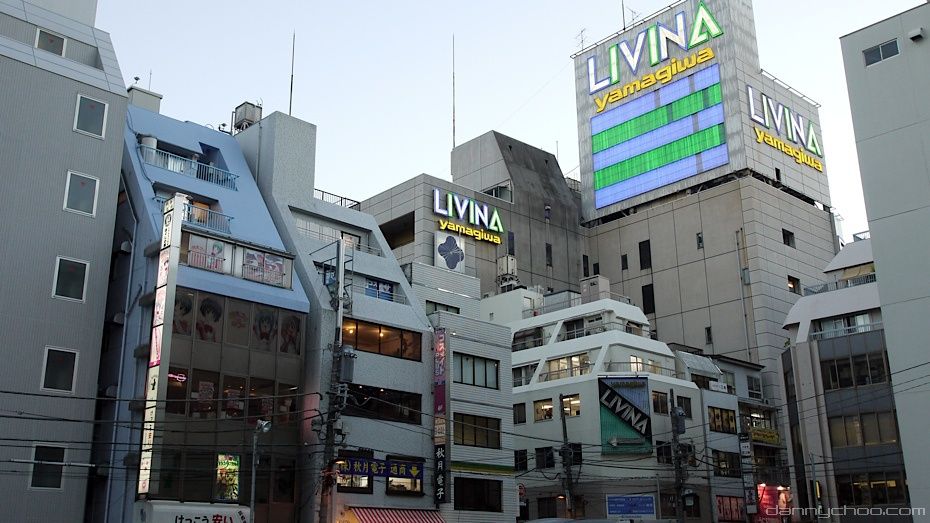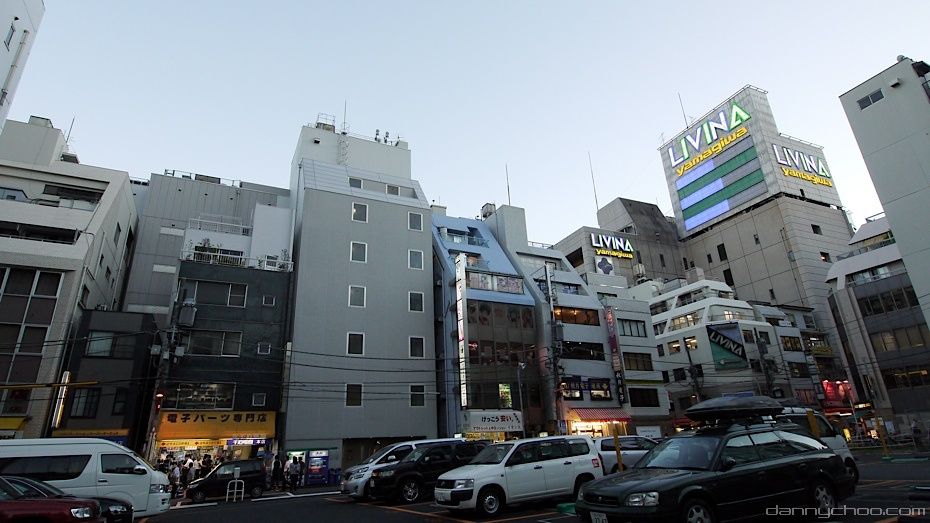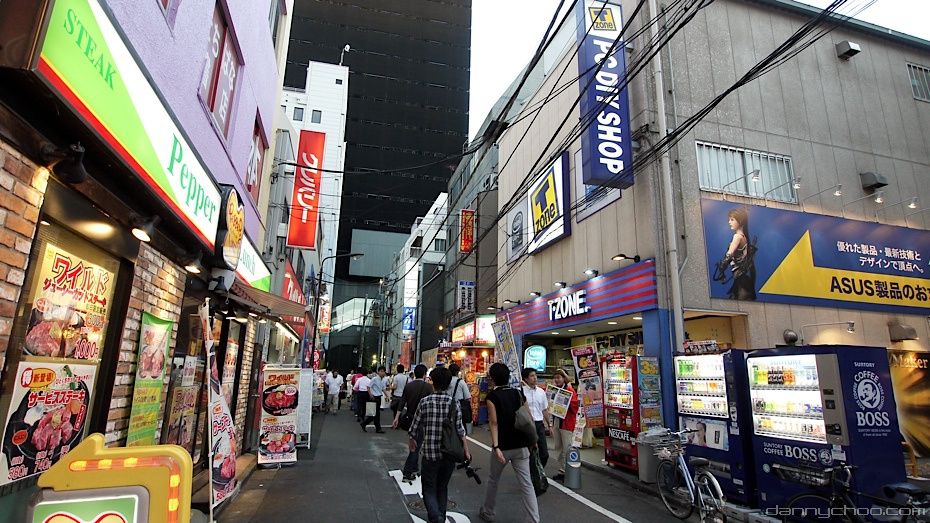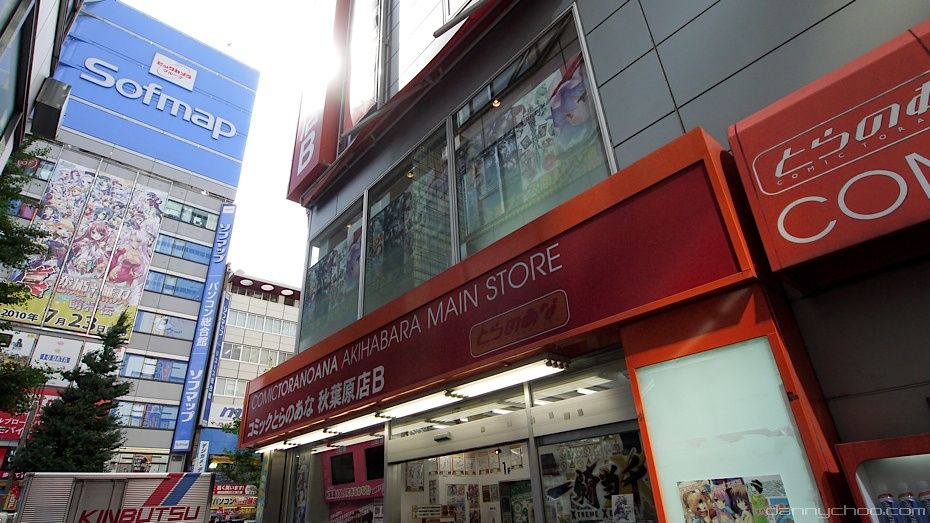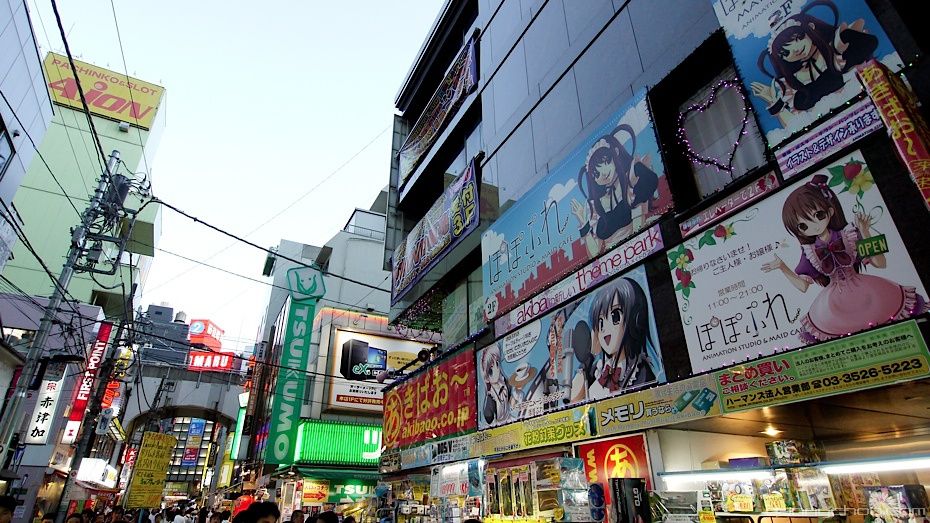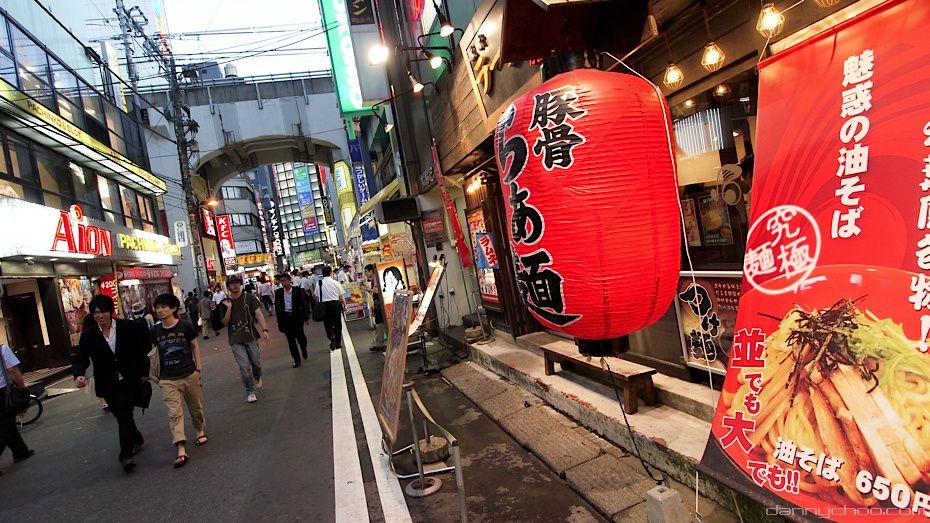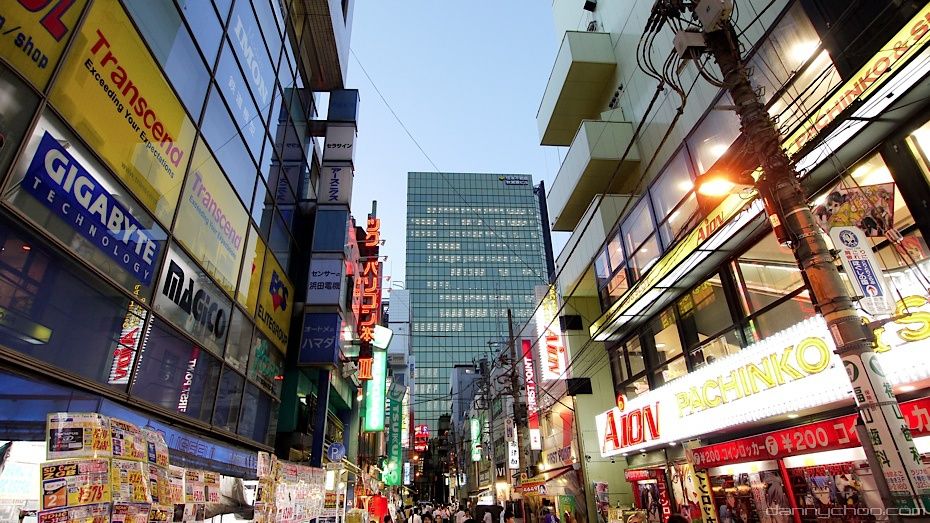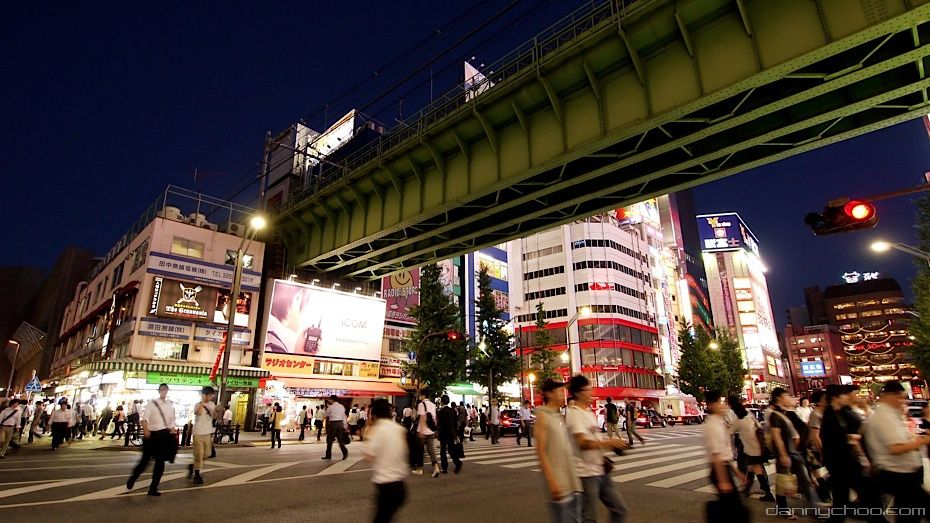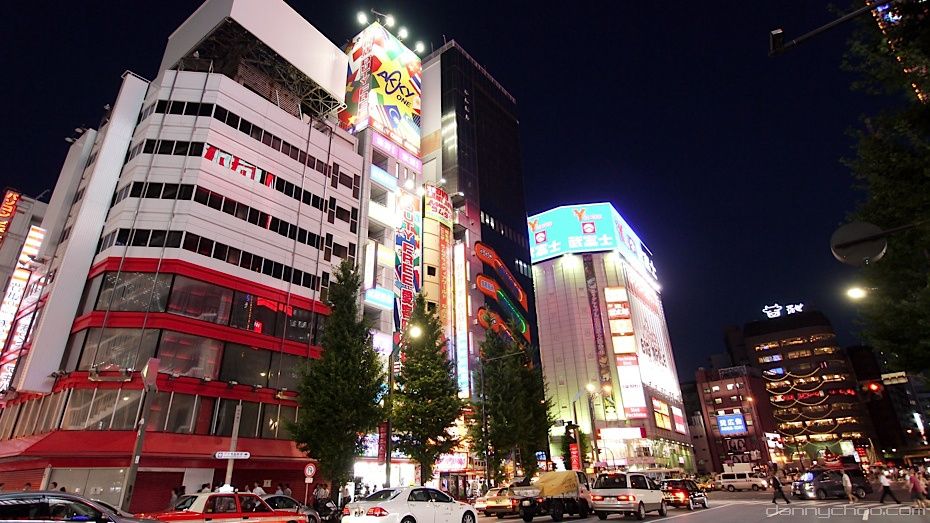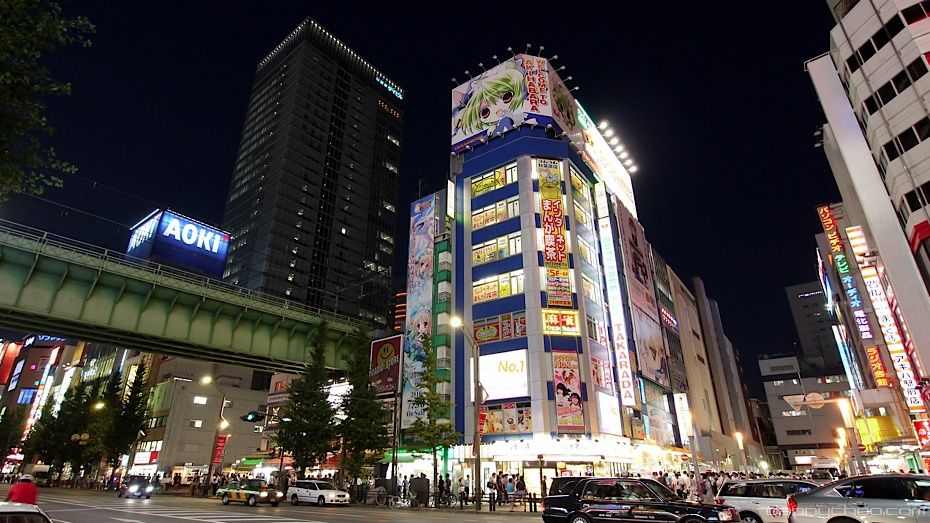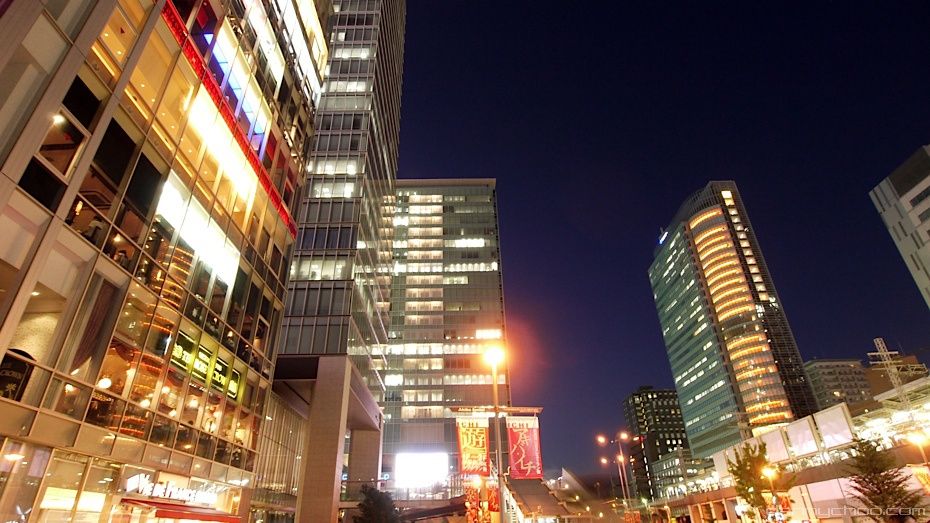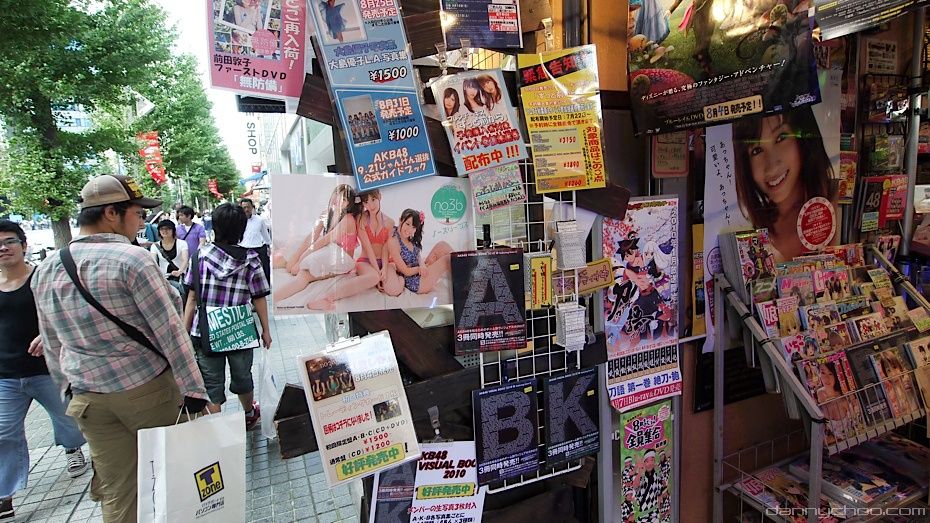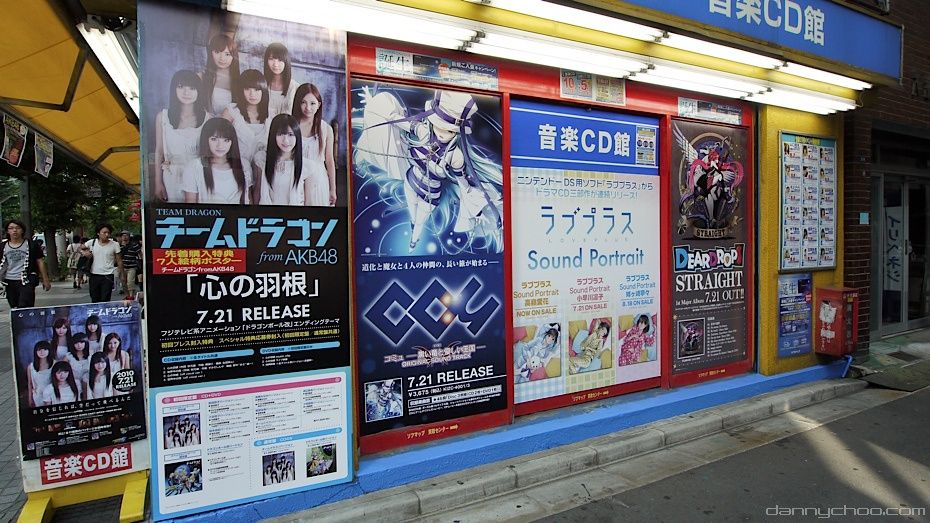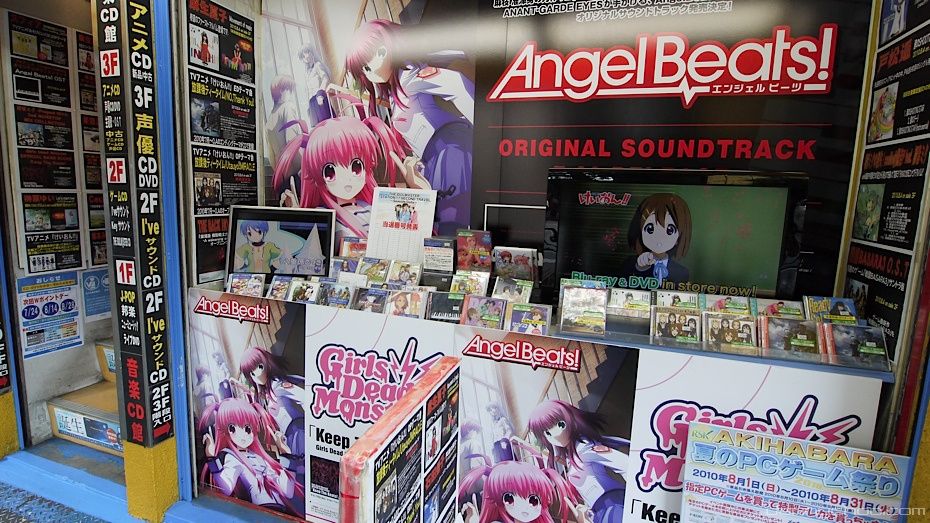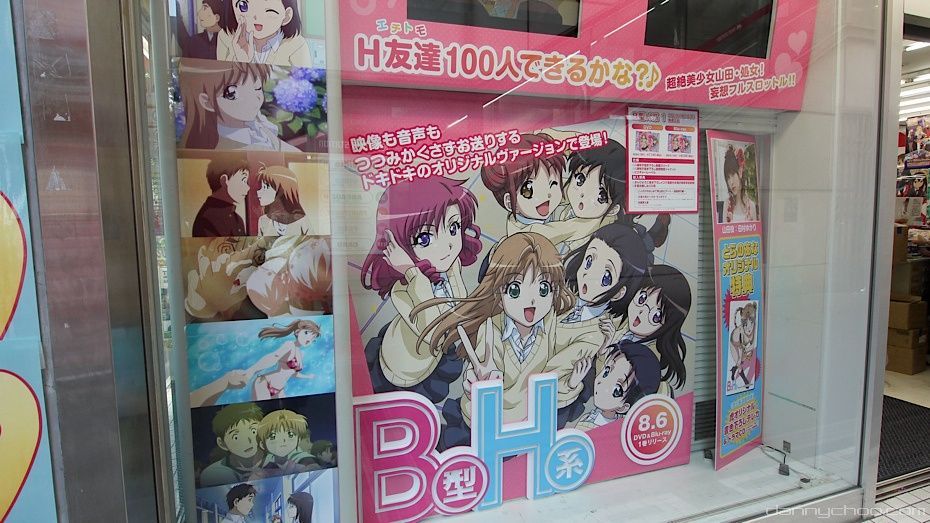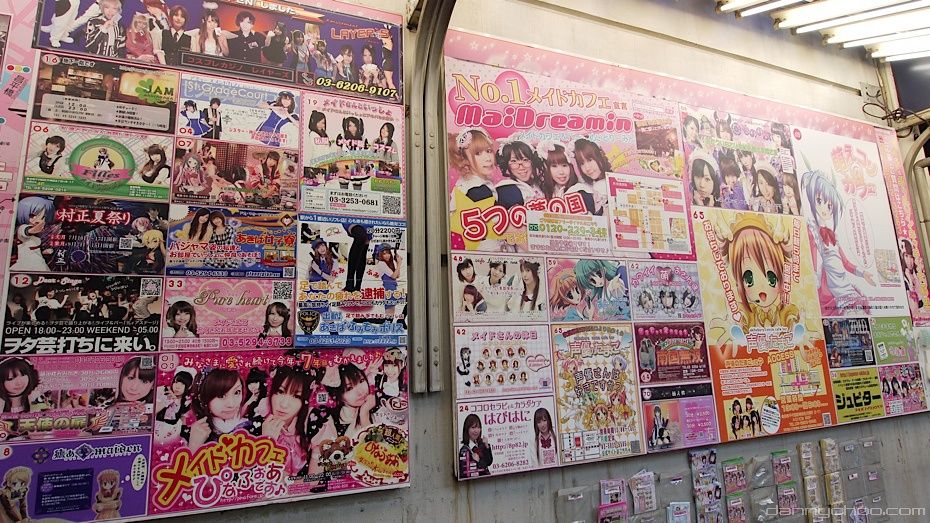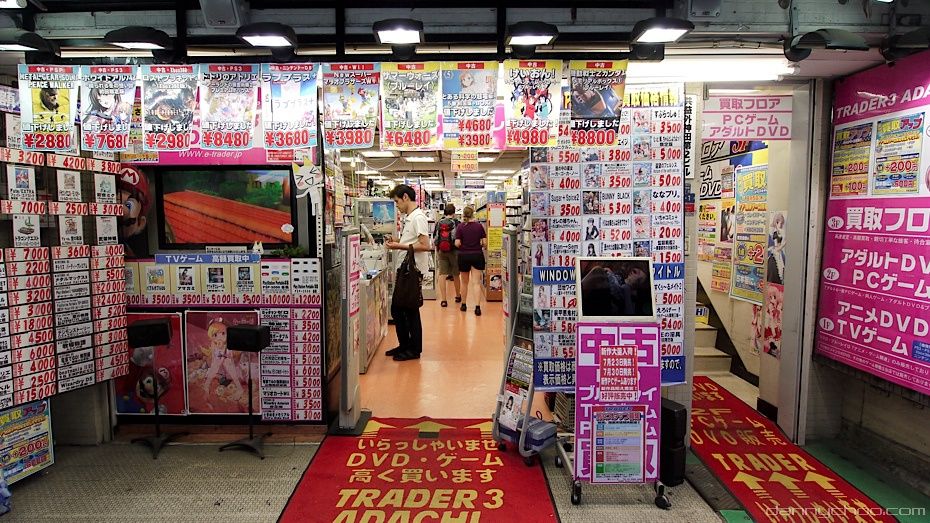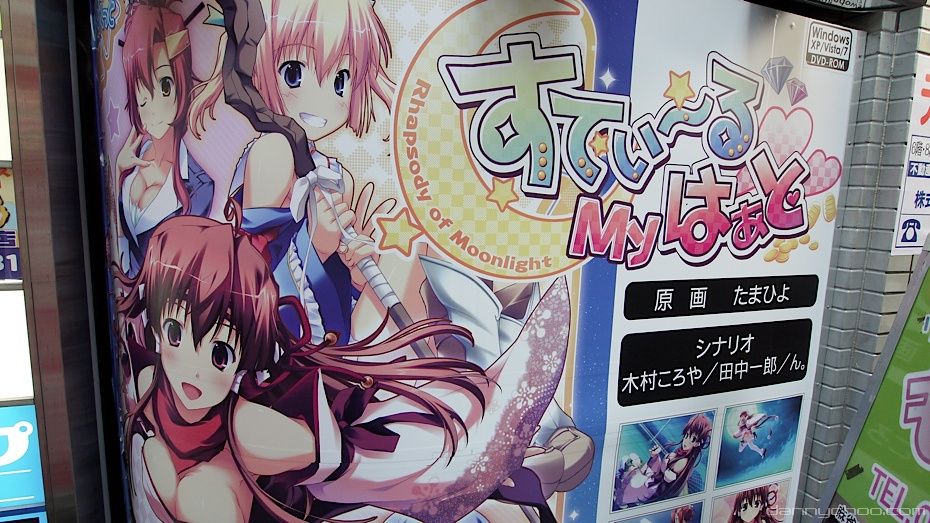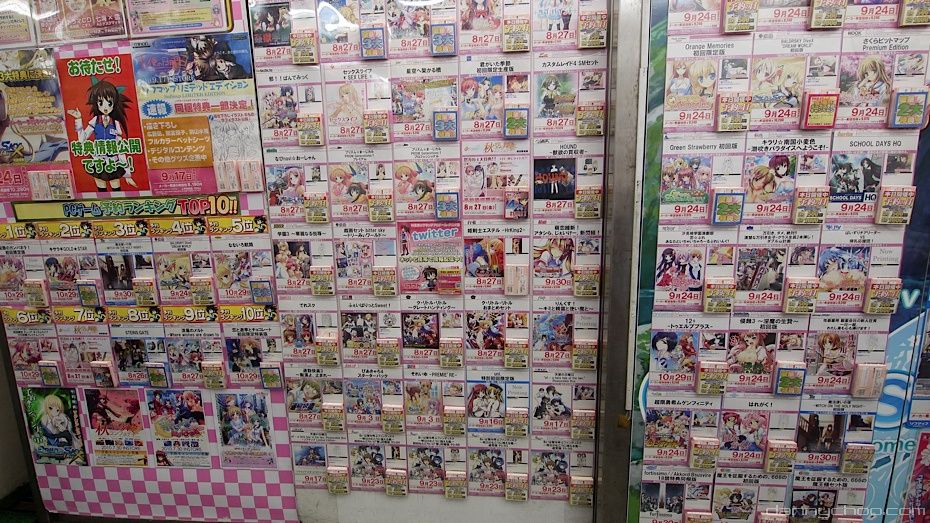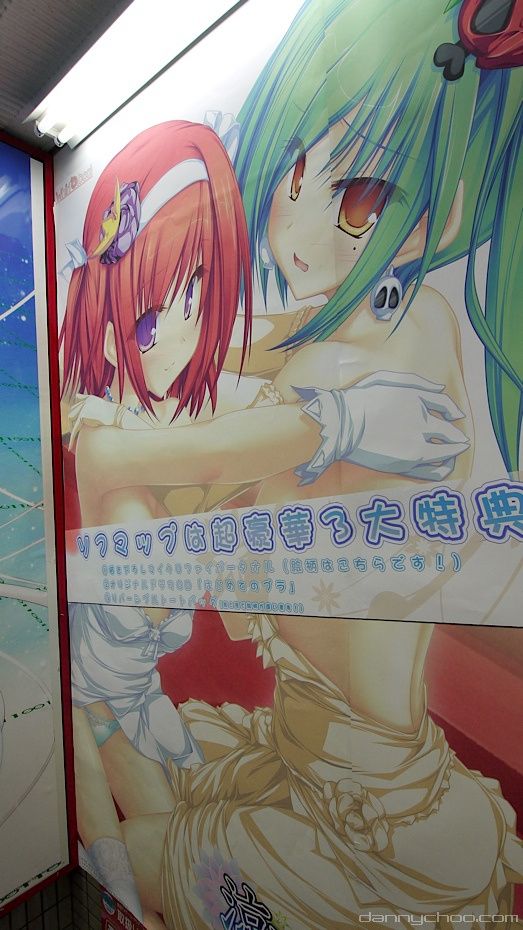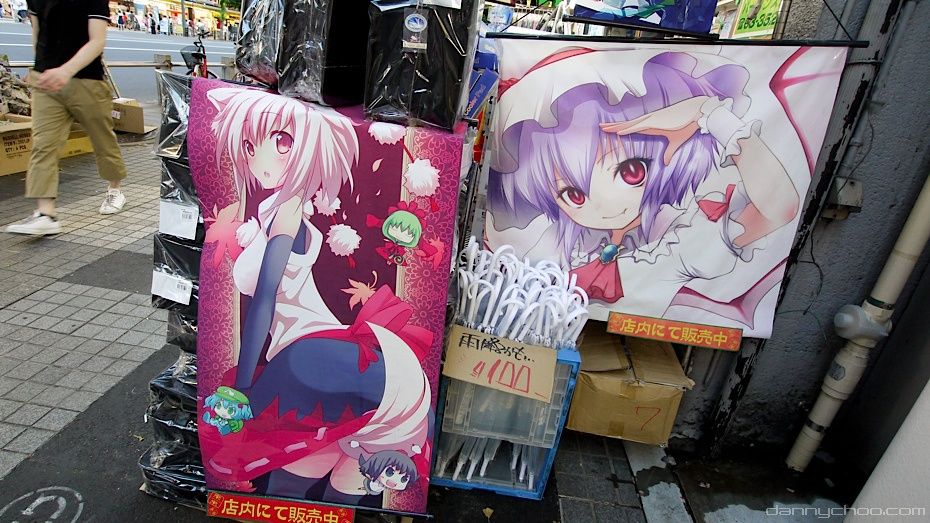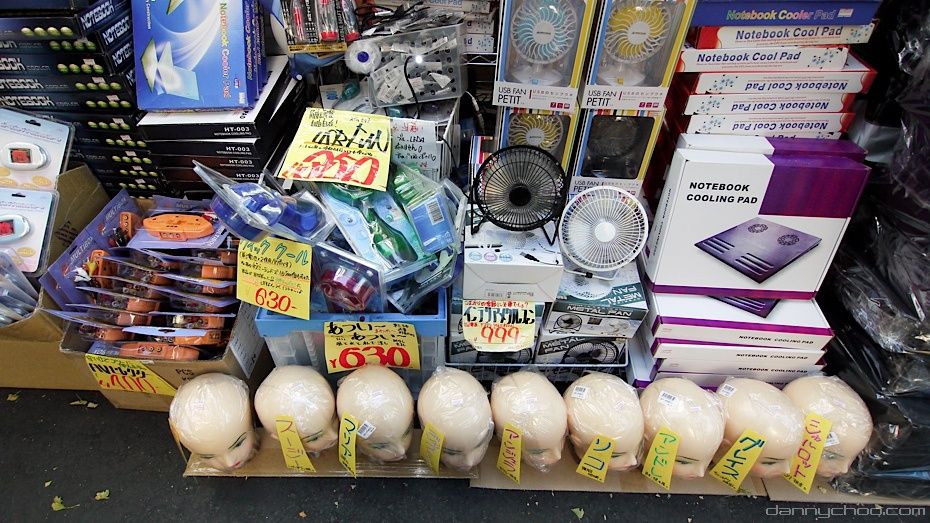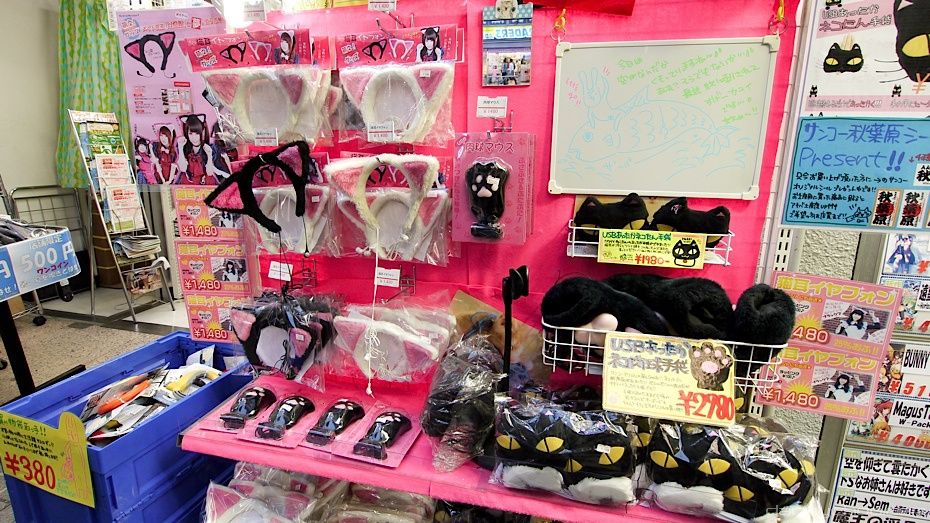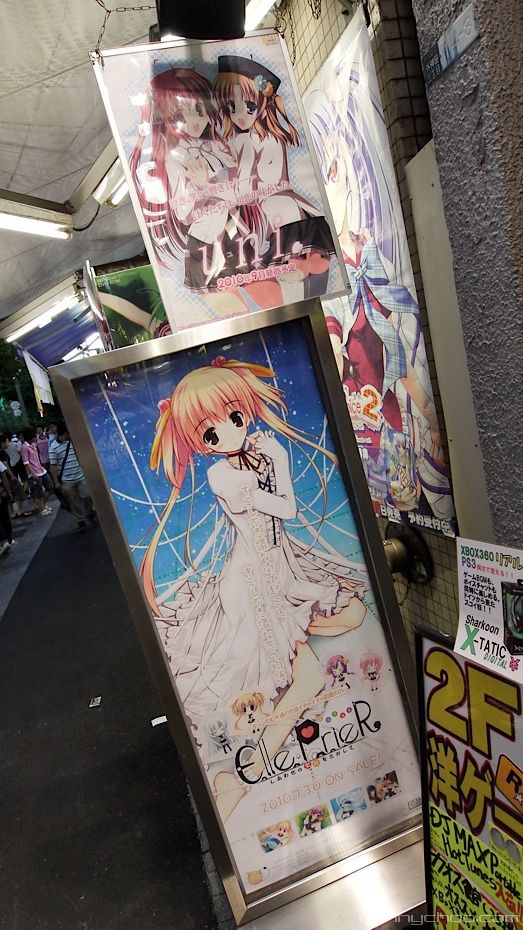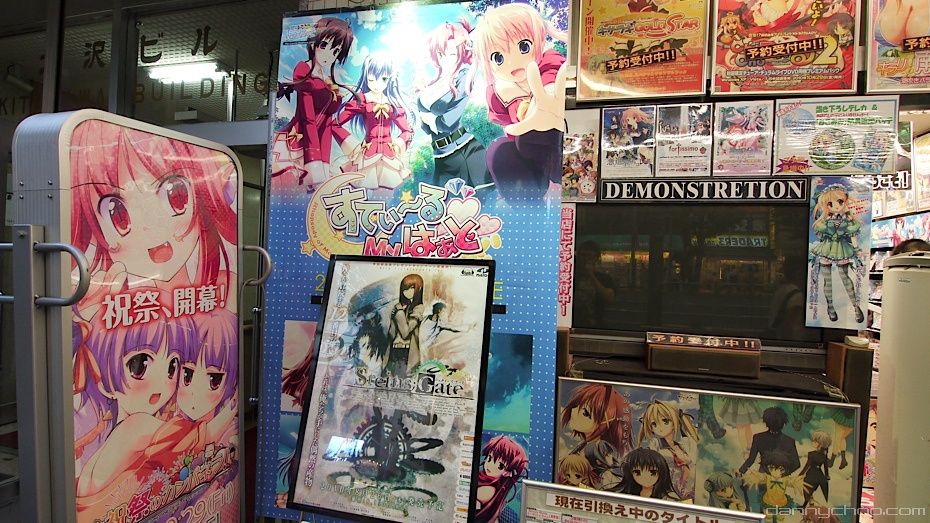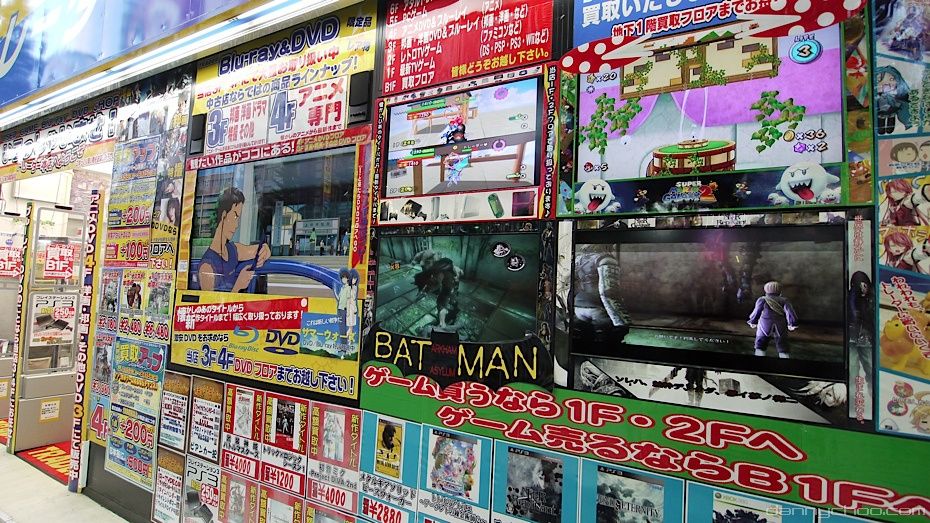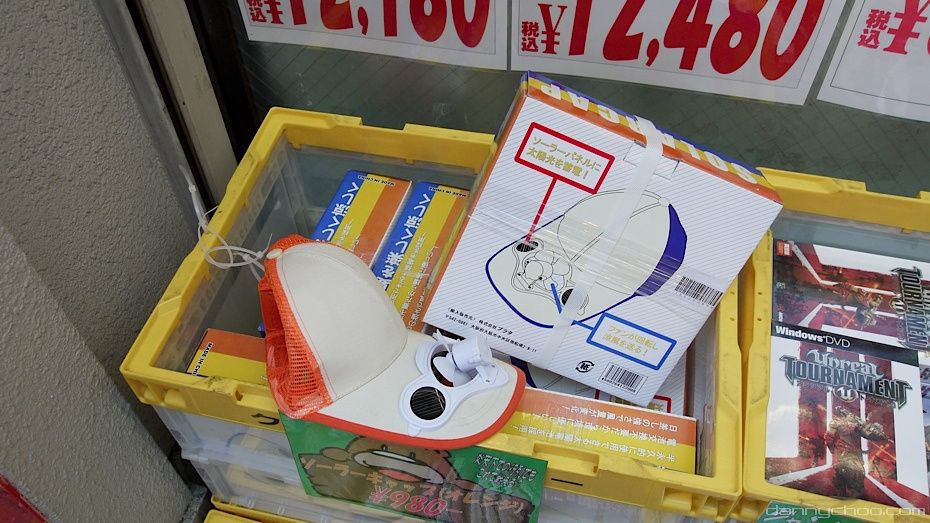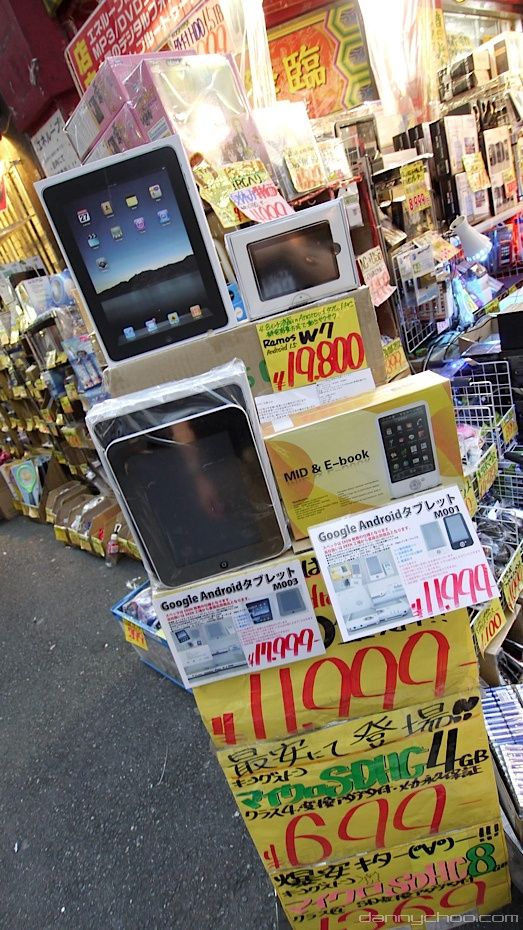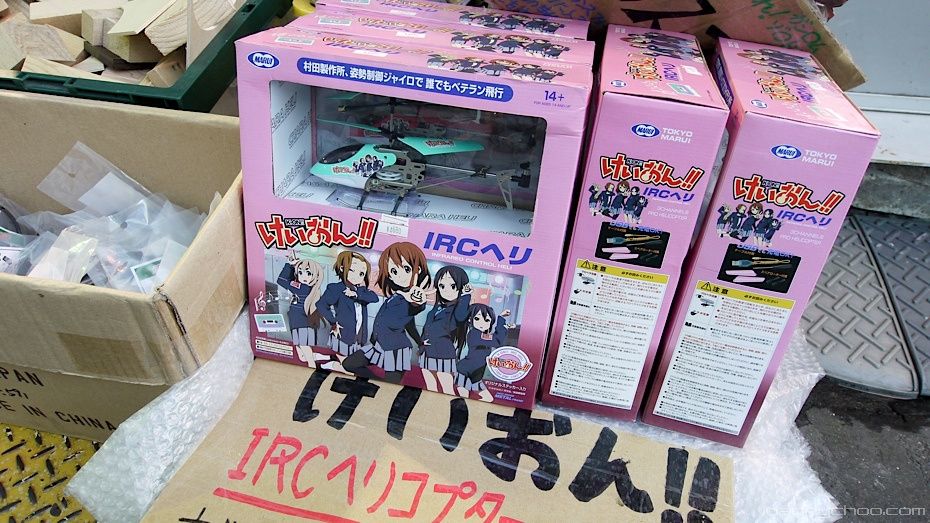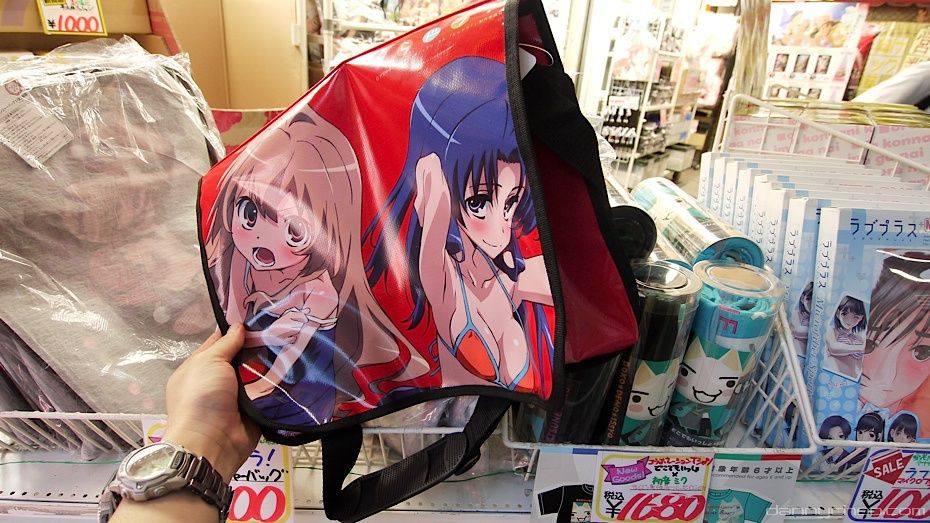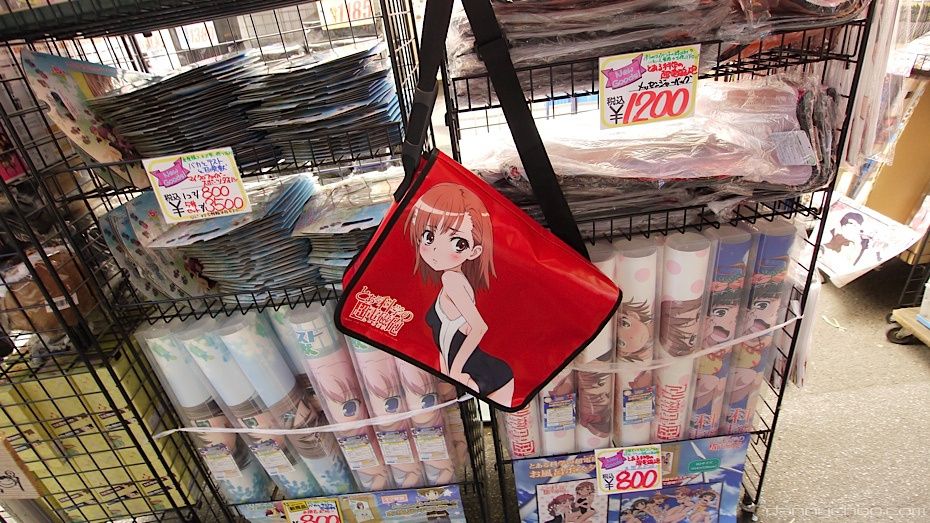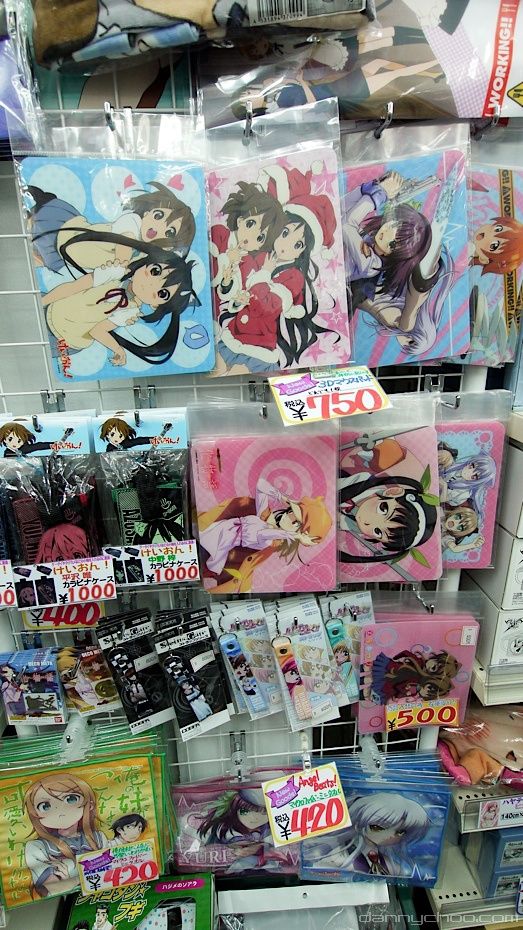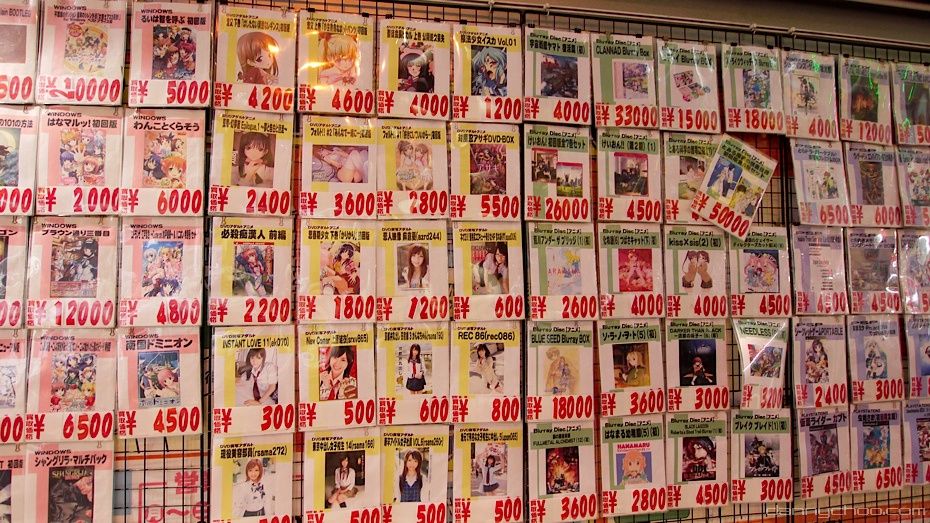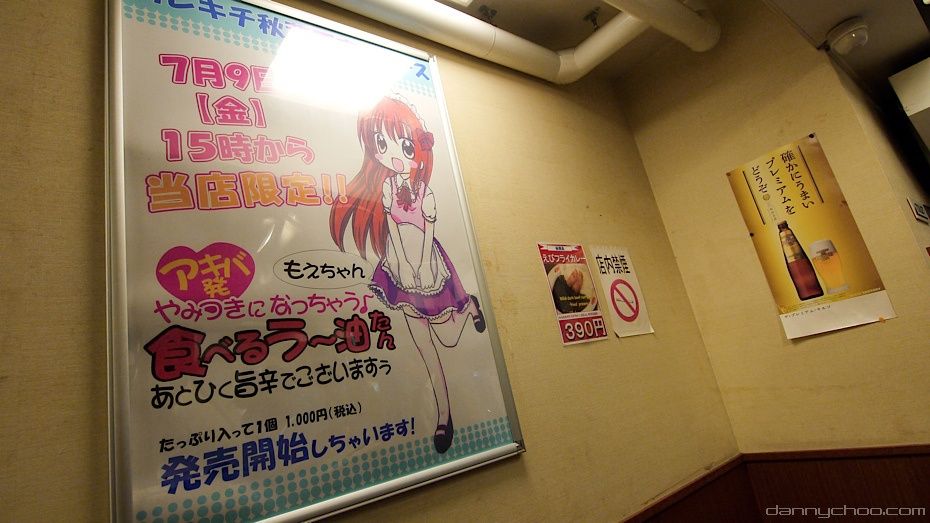Akihabara - its like its own small planet where you can get lost exploring electronics, figures, dolls and a load of other anime related merchandise. If you are planning on visiting Akihabara then give yourself a full day.
Today we take a look at some of the history of Akihabara through some interesting photos which I dug up.
History of Akihabara
Akihabara 2010 August. Chuo Dori is the large main road that runs through Akihabara. Be sure to explore all the streets that branch off Chuo Dori and also make sure to keep looking upwards as each building more often than not contains several different shops.
Many many moons ago during the Edo Period (1603 - 1868), Akihabara was a a huge flat land - 30,000 square meters was cleared to prevent fires from reaching Edo Castle. With nothing to catch fire to, fires would die out in the huge field.
During the Meiji Period (1868 - 1912), a shrine called "Chinka" was built in Akihabara where the deity "Hibuse" resided. The deity existed to ward away and extinguish fires.
If this all sounds slightly familiar, its because our anime title "Chinka" is the same kanji as the shrine meaning to "extinguish a fire" and "Hibuse" is the name of the resident cat. There's quite a bit of history going into Chinka which I will talk more about in a few days - although if you read the Japanese anime mags then you may already know ^^;
If this all sounds slightly familiar, its because our anime title "Chinka" is the same kanji as the shrine meaning to "extinguish a fire" and "Hibuse" is the name of the resident cat. There's quite a bit of history going into Chinka which I will talk more about in a few days - although if you read the Japanese anime mags then you may already know ^^;
In Taisho 14 (1925), Akihabara station opened up to accept passengers - up until then it was used exclusively for cargo.
The convenience of transportation in the area which developed over the years lead to many wholesalers gathering here which then lead to Akihabara being designated and a fruits and vegetables market.
The convenience of transportation in the area which developed over the years lead to many wholesalers gathering here which then lead to Akihabara being designated and a fruits and vegetables market.
Across the road is the Radio Center which is still in business. They mention this photo being taken just after World War II.
After Japan lost the war in 1945, the many radio technicians and electronic engineers stationed around the world came back home to Japan. At the time, there wasn't many jobs going round and all most of them could do was to make things like electric rice cookers or pots.
They wanted to contribute to the reconstruction of Japan and called out to all the Japanese engineers to gather at Akihabara. At the time, radio was the only form of enjoyment in an era where printing and other forms of entertainment was scarce - thus the engineers focused their efforts in bringing the people more radios.
They wanted to contribute to the reconstruction of Japan and called out to all the Japanese engineers to gather at Akihabara. At the time, radio was the only form of enjoyment in an era where printing and other forms of entertainment was scarce - thus the engineers focused their efforts in bringing the people more radios.
Many children's books at the time depicted Akihabara as being a "city of the future."
Photo above snapped during 1965 outside the Akihabara Department Store which has now been dismantled.
Between 1960 and 1970, Akihabara started to see many electronic stores selling white goods - TV's, washing machines, fridges and so on.
At the same time, DenDen Town in Osaka saw similar growth which also became an electronic town.
At the same time, DenDen Town in Osaka saw similar growth which also became an electronic town.
Another photo from 1965 taken on the Sobu platform at Akihabara.
During the 1970's, the popularity of the personal computer started to take off and along with computer shops, many second hand computer shops started to appear around Akihabara too.
During the 1970's, the popularity of the personal computer started to take off and along with computer shops, many second hand computer shops started to appear around Akihabara too.
Music related stores started to appear during the same period due to the popularity of stereo music equipment and imported records.
Photo snapped in 1965 facing the Electronic Town Akihabara exit.
In 1973, Chuo Dori was pedestrianized on weekends to enable folks to go about shopping in a more relaxed manner - it was to last until 2008 where the Akihabara stabbings claimed 7 lives.
In 1973, Chuo Dori was pedestrianized on weekends to enable folks to go about shopping in a more relaxed manner - it was to last until 2008 where the Akihabara stabbings claimed 7 lives.
Together with the boom of the Family Computer gaming machine in the 80's, many gaming stores started to appear around Akihabara. By this time, music related stores were all over the area.
Akihabara 1996. You can see a big circle towards the top of the photo - T'was a basketball court and car park.
Competition between retailers selling electronics became fierce and as a result many stores closed down to give way to computer stores.
Competition between retailers selling electronics became fierce and as a result many stores closed down to give way to computer stores.
And this is a snap that I took of that basket ball park on my first visit to Japan back in 1993. Many folks rollerblading here too.
It was at this time when many shops selling computer parts started to spring up - the start of the DIY PC era.
It was at this time when many shops selling computer parts started to spring up - the start of the DIY PC era.
Akihabara 1993. Every visit to Akihabara still feels like my first visit as there is always so much to see and experience.
Back then I tucked my T-shirt into my jeans and wore a huge eagle buckle.
Back then I tucked my T-shirt into my jeans and wore a huge eagle buckle.
Still back in 1993 on a Summers Sunday afternoon. I would shop for VHS tapes and CD's of my fave idols in one of the many music stores. Ribbon was one of my fave groups.
Akihabara 1995. Constantly working part time back in London enabled me to save enough dosh to buy a ticket to come to Japan once a year. The trips were essential for me to absorb and learn more of the culture and leave me with that horrible feeling of going back to the UK. But that feeling only served as fuel for me to try harder with my Japanese studies.
It was around this time when Akihabara started to see the popularity take off for adult PC games starring cute 2D girlies - the beginnings of Akihabara turning into a sacred land for Otaku and Japanese Pop Culture.
More 1995 Akihabara. At that time cars could park freely outside the station and there wasn't a single maid in sight.
Akihabara 1995. The T-Shirt I'm wearing says "Any 2 T-shirts for 1500 yen." The shop that I got it from used it as a notice to customers and wasn't for sale but I thought it looked too cool and special so I asked them to sell it to me ^^;
Akihabara 2001 - the same corner as the first photo in this post.
I first started off as an Idol otaku (アイドルオタク) and then progressed into a DIY PC otaku (自作パソコンオタク) where I would make regular trips here to buy and change PC parts which had conflicting resources. Ugh!
I first started off as an Idol otaku (アイドルオタク) and then progressed into a DIY PC otaku (自作パソコンオタク) where I would make regular trips here to buy and change PC parts which had conflicting resources. Ugh!
Akihabara 2001 at the Electronic Town exit outside Akihabara station. Outside the department store where a few folks demonstrating the latest orange peel or other crazy kitchen invention.
Akihabara 2005. It was around 2005/2006 when I started to get into figures.
Mizuho Kazami as an example of the type of figures I was buying.
Mizuho Kazami as an example of the type of figures I was buying.
Akihabara 2010 August. This is the exact spot where the killings took place a few years ago.
What does Akihabara in the next 5 years have in store for us? Anybody like to make a prediction?
I think that in the next 5 years that there will be shops here that do 3D printing. All you do is bring them the data and they will print a new figure for you in minutes. Instead of waiting for months for a figure to be made - all you need to do is learn or buy the data for a new figure and then go get it printed.
The 3D printing technology of late is getting much better but the machines still cost an arm and a leg.
I think that in the next 5 years that there will be shops here that do 3D printing. All you do is bring them the data and they will print a new figure for you in minutes. Instead of waiting for months for a figure to be made - all you need to do is learn or buy the data for a new figure and then go get it printed.
The 3D printing technology of late is getting much better but the machines still cost an arm and a leg.
Leaving you with more photos from last week as I go and cook more from the backlog of posts.
Akihabara located on the map below - get off at JR Akihabara.
